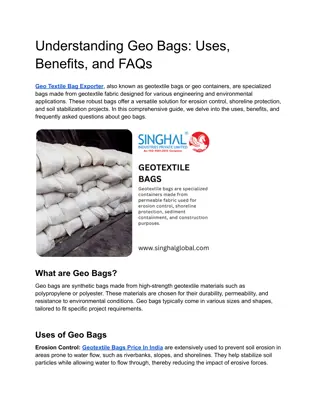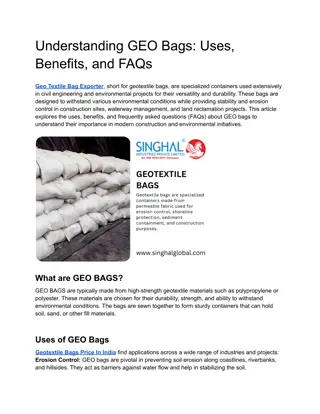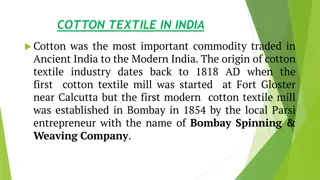
South Carolina Industrial Revolution Post-Civil War Insights
Discover how the industrial landscape evolved in the South post-Civil War, with a focus on South Carolina. Explore the growth of key industries, the impact of the railroad boom, and the emergence of textile mills. Learn about the labor dynamics, including the exclusion of African Americans and the role of children in the workforce.
Uploaded on | 0 Views
Download Presentation

Please find below an Image/Link to download the presentation.
The content on the website is provided AS IS for your information and personal use only. It may not be sold, licensed, or shared on other websites without obtaining consent from the author. If you encounter any issues during the download, it is possible that the publisher has removed the file from their server.
You are allowed to download the files provided on this website for personal or commercial use, subject to the condition that they are used lawfully. All files are the property of their respective owners.
The content on the website is provided AS IS for your information and personal use only. It may not be sold, licensed, or shared on other websites without obtaining consent from the author.
E N D
Presentation Transcript
US industry expands rapidly after the Civil War Growth in steel and oil industries Meat packing and grain processing plants Immigrants provided labor
SC was unaffected by postwar industrial boom Conservative Democrats did not support the growth of industry Focused more on reviving the old South Did not attract large numbers of immigrants looking for work Postwar Railroad boom also impacted SC Major cities grew as a result of their location on routes (Columbia) Established time zones and standard time
Contributing factors Ready supply of raw material (excess cotton) Changing attitudes about the development of industry Fast-flowing rivers and streams in the Upcountry to power the mills Ready supply of workers Poor farmers who could no longer make a living from the land Provided homes, schools, churches, and stores to workers
Started in the Upstate Modeled after New England mills Within 15 years, mills were located in the Midlands and Low Country By 1910, SC was the second largest textile producing state in the nation
African Americans were excluded from textile mill labor Working conditions depended on the generosity of mill owners and economic conditions Worked long hours for low pay (1/2 of what other states paid) Called lint heads Women and children paid less than men
Children worked in the mills Small fingers made it easier to repair machines, but led to more accidents
Worked from 6 am to 6 pm Governor Tillman reduced working hours to 66 per week Workers suffered from lung diseases from breathing in cotton fibers Work place accidents were common Workers were unable to organize successful Unions
Tobacco Replaced cotton as a cash crop Phosphate: mineral used for fertilizer Found near Charleston and Beaufort (brought wealth to those areas) Northern mills came to SC because of cheap, non-Union labor Companies went out of business when phosphate deposits were found in Florida






















